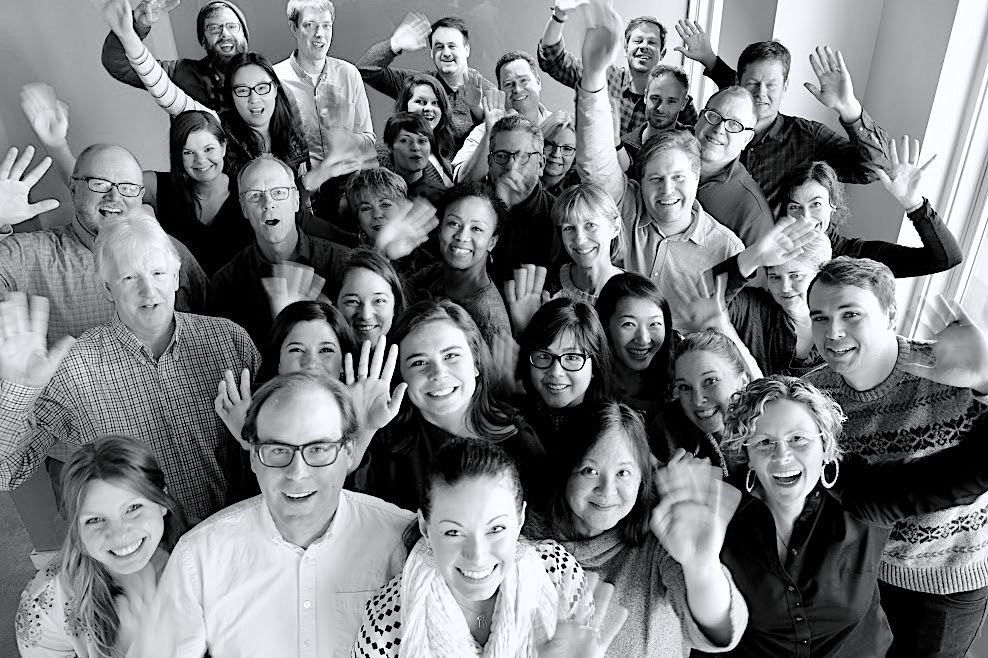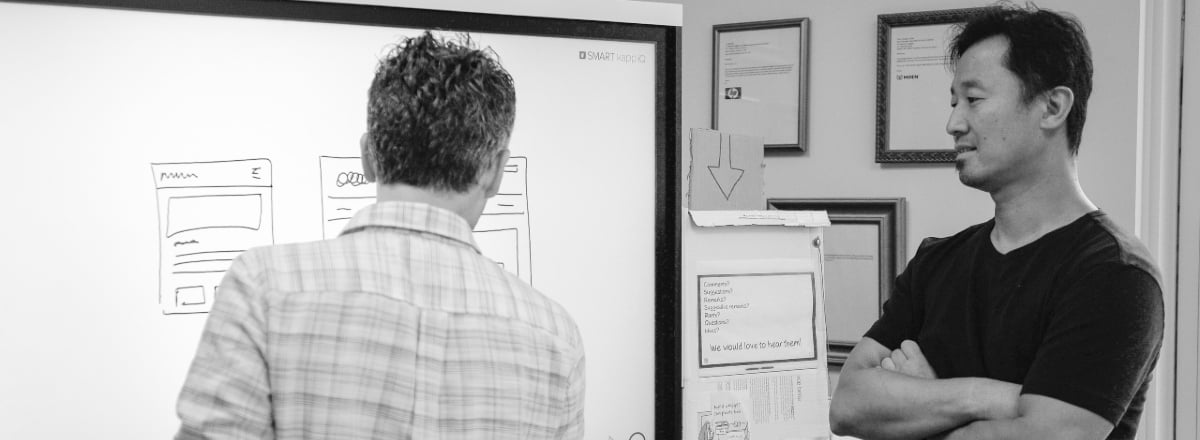
By
Lulu Xiao
The best UX professionals and teams have a diversity of skills in their arsenals that they use to research, design, and communicate effective design decisions. Numerous studies confirm that diverse teams perform at a higher level and, in the multi-dimensional UX world, a complex and expansive range of skills is especially necessary.
As an example, the people in Blink’s office have incredibly varied backgrounds, areas of expertise, and professional trajectories. This diversity is undeniably core to the UX teams we create. Individuals are able to work collaboratively and contribute their unique experiences to make UX teams more robust. Below are just a handful of ways people’s diverse backgrounds have manifested in their work and have been advantageous to our clients:
“I was a teacher in the Bellevue school district, so I know how and when to let people struggle [during usability testing, for example]. My experience working with kids has come in handy when moderating research sessions with children too. Additionally, because I was a teacher, I am comfortable talking and presenting to a variety of crowds. Or, in Blink’s case, a variety of different clients.” – Tom Satwicz, Research Director & Partner

“The design process begins by defining a problem and then working towards its solution. My start in the publishing industry and, since then, experience working in a variety of different environments and industries has given me a deep background in design and, subsequently, problem solving. This foundation is what’s important, regardless of what the project is, who the client is, or what industry you are working in. Jared Spool says it well: ‘Great designers don’t fall in love with their solution. Great designers fall in love with the problem.’” – Deborah Gassner, Visual and Interaction Designer
“Coming from a television post-production background, I noticed several parallels between video editing and user research. As an example, video editors and assistants take hundreds of hours of footage and distill that into a 30- or 60-minute story (or episode). User research is very similar. As researchers, we analyze interviews and usability sessions in search of findings we use to tell the ‘story’ of the study.” – Greg Hansen, User Researcher
“I have seen the amazing things that can come from putting your mind to something, and I apply my mantra of ‘the only person stopping yourself is yourself’ to my daily life and work at Blink. One time, for example, I was on my own and saw that my favorite Johnny Cash cover band was in town. I decided to go and during the show the lead singer said to the crowd, ‘well, we gotta find a June to sing Jackson with us.’ I motioned to the drummer that I could be June and they brought me on stage. I was so nervous and thought I was going to (1) forget the words and (2) DIE. Well…I nailed it! And they liked it so much that they asked me to stay for the second show…and then they asked me to join them for part of their U.S. tour! Of course, I was like, ‘HECK YES!’
I wouldn’t have gotten that opportunity if I hadn’t put myself out there, so it reminds me to persevere, stay optimistic, and not be afraid to put my mind to something – especially when I’m juggling lots of project management duties!” – Brigitt Rains, Project Management Lead
“My varied background has helped me to always see our work at Blink (and my current Client Engagement Lead position) through two lenses: the business lens and the human lens. So much of my previous work involved numbers and contracts (finance) as well as people and contracts (real estate). It really prepared me to always keep a good balance of these two key parts of the business world while always remembering that there are real people involved!” – Lauren Martin, Client Engagement Lead
A diverse background is advantageous in more practical ways too. For instance, Heidi Adkisson, a Principal Designer & Partner at Blink, was in a management career before she made the decision to become an interaction designer instead. She notes, “[when I was making the career change], I leveraged the experience I did have to get my foot in the door somewhere as a person with no experience. I wasn’t able to get a job initially as a designer, with no experience, but I was able to get a job as a project manager. I volunteered to help out in the design area evenings and weekends.” Since then, Heidi’s range of skills have made her an invaluable member of any team.
These are only a few examples, but they convince us that each individual’s personal and varied background substantially enhances our project teams. As Roxane Neal mentioned in her blog post College and Career Tips for Future UX Pros, the key is many experiences, and Blinkers prove that the takeaway is true. Individually, each person contributes his/her unique and diverse experiences. Together, we create better UX teams.
Lulu Xiao is a UX Research Intern at Blink UX. In her off time she can be found exploring the city of Seattle and finishing up her masters degree in Human Centered Design and Engineering.
